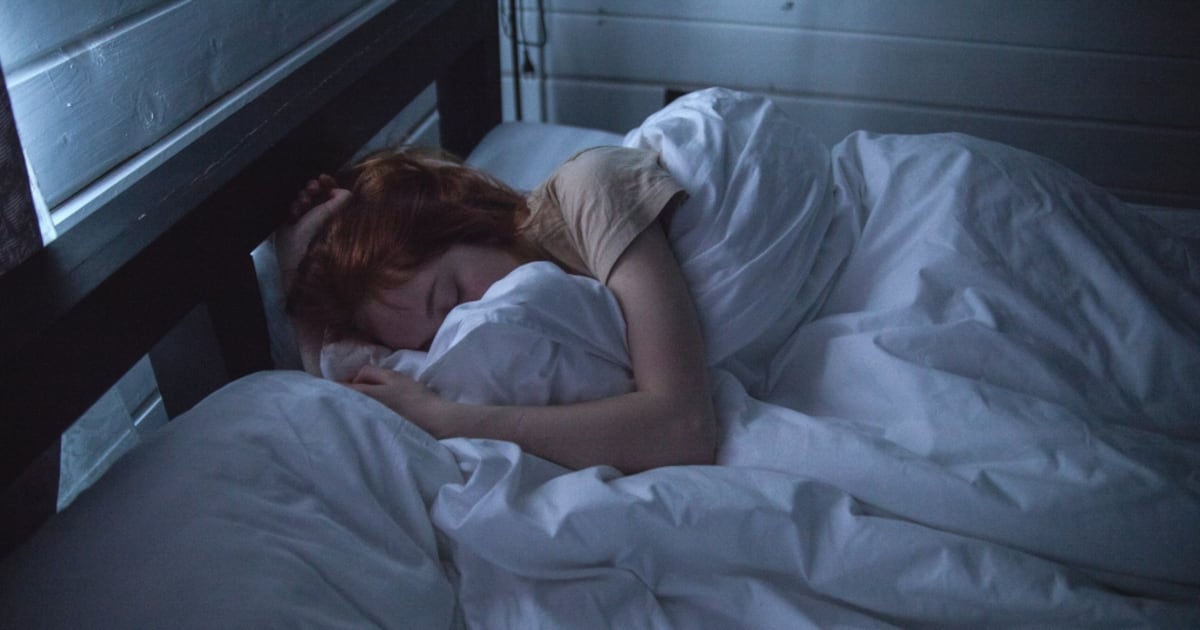Health
Recognizing Sleep Apnea: Symptoms and Effective Solutions

Sleep apnea is a serious condition that can significantly impact one’s health and well-being. It is characterized by interruptions in breathing during sleep, which can lead to insufficient oxygen levels. Despite seemingly getting a full night’s sleep, individuals with sleep apnea often wake up feeling fatigued and unrefreshed.
Cody Allen, the director of operations and clinical sleep specialist at Ontario Sleep Care, highlighted key indicators of this disorder during an interview with CTV Your Morning Ottawa. He noted that snoring is often the first sign that something may be wrong. “The most common thing is snoring. When people start snoring, it’s kind of a red flag,” Allen stated. While not everyone who snores has sleep apnea, it remains the most prevalent symptom.
Another significant warning sign is persistent tiredness or the need for daytime naps. Allen emphasized that if individuals struggle to remain alert throughout the day without excessive caffeine intake, this could indicate a potential sleep disorder. “If you’re constantly tired and not able to work throughout your day without having 10 cups of coffee and not making it to dinnertime, that’s a red flag,” he explained. In such cases, consulting a family physician for a sleep test is advisable.
Identifying Symptoms and Risk Factors
In addition to snoring and daytime fatigue, other symptoms of sleep apnea include difficulty falling asleep, staying asleep, and mood disorders related to chronic tiredness. The condition is more prevalent among men, particularly middle-aged and older adults, as well as those who are obese. Contributing factors such as smoking and alcohol consumption can exacerbate the disorder.
The consequences of untreated sleep apnea can be serious. Individuals may face complications like hypertension, excessive daytime sleepiness, metabolic syndrome, weight gain, and persistent headaches. Addressing these symptoms promptly is crucial to prevent further health issues.
Understanding Treatment Options
For those diagnosed with sleep apnea, the use of Continuous Positive Airway Pressure (CPAP) machines remains the gold standard in treatment. Allen acknowledged that while some may find the idea of wearing a mask uncomfortable, the benefits can be substantial. “A lot of people try to avoid using those because they’re not fun,” he remarked. “Yes, it’s not fun to wear a mask to sleep, but it does improve your sleep substantially.”
Recent advancements in CPAP technology have made these devices less obtrusive. Allen noted that modern machines are far more compact and quiet than their predecessors. “They used to look like little generators; now they look like laptops or iPads. They’re very small, very quiet. The masks have also evolved to become smaller and quieter,” he explained.
In conclusion, recognizing the signs of sleep apnea is key to improving overall health. Individuals experiencing symptoms should seek professional advice to determine appropriate treatment options, such as CPAP therapy, to enhance sleep quality and daily functioning.
-

 Education3 months ago
Education3 months agoBrandon University’s Failed $5 Million Project Sparks Oversight Review
-

 Science4 months ago
Science4 months agoMicrosoft Confirms U.S. Law Overrules Canadian Data Sovereignty
-

 Lifestyle3 months ago
Lifestyle3 months agoWinnipeg Celebrates Culinary Creativity During Le Burger Week 2025
-

 Health4 months ago
Health4 months agoMontreal’s Groupe Marcelle Leads Canadian Cosmetic Industry Growth
-

 Technology3 months ago
Technology3 months agoDragon Ball: Sparking! Zero Launching on Switch and Switch 2 This November
-

 Science4 months ago
Science4 months agoTech Innovator Amandipp Singh Transforms Hiring for Disabled
-

 Education3 months ago
Education3 months agoRed River College Launches New Programs to Address Industry Needs
-

 Technology4 months ago
Technology4 months agoGoogle Pixel 10 Pro Fold Specs Unveiled Ahead of Launch
-

 Business3 months ago
Business3 months agoRocket Lab Reports Strong Q2 2025 Revenue Growth and Future Plans
-

 Technology2 months ago
Technology2 months agoDiscord Faces Serious Security Breach Affecting Millions
-

 Education3 months ago
Education3 months agoAlberta Teachers’ Strike: Potential Impacts on Students and Families
-

 Science3 months ago
Science3 months agoChina’s Wukong Spacesuit Sets New Standard for AI in Space
-

 Education3 months ago
Education3 months agoNew SĆIȺNEW̱ SṮEȽIṮḴEȽ Elementary Opens in Langford for 2025/2026 Year
-

 Business4 months ago
Business4 months agoNew Estimates Reveal ChatGPT-5 Energy Use Could Soar
-

 Technology4 months ago
Technology4 months agoWorld of Warcraft Players Buzz Over 19-Quest Bee Challenge
-

 Business3 months ago
Business3 months agoDawson City Residents Rally Around Buy Canadian Movement
-

 Technology2 months ago
Technology2 months agoHuawei MatePad 12X Redefines Tablet Experience for Professionals
-

 Business3 months ago
Business3 months agoBNA Brewing to Open New Bowling Alley in Downtown Penticton
-

 Technology4 months ago
Technology4 months agoFuture Entertainment Launches DDoD with Gameplay Trailer Showcase
-

 Technology4 months ago
Technology4 months agoGlobal Launch of Ragnarok M: Classic Set for September 3, 2025
-

 Technology4 months ago
Technology4 months agoInnovative 140W GaN Travel Adapter Combines Power and Convenience
-

 Science4 months ago
Science4 months agoXi Labs Innovates with New AI Operating System Set for 2025 Launch
-

 Top Stories2 months ago
Top Stories2 months agoBlue Jays Shift José Berríos to Bullpen Ahead of Playoffs
-

 Technology4 months ago
Technology4 months agoNew IDR01 Smart Ring Offers Advanced Sports Tracking for $169










